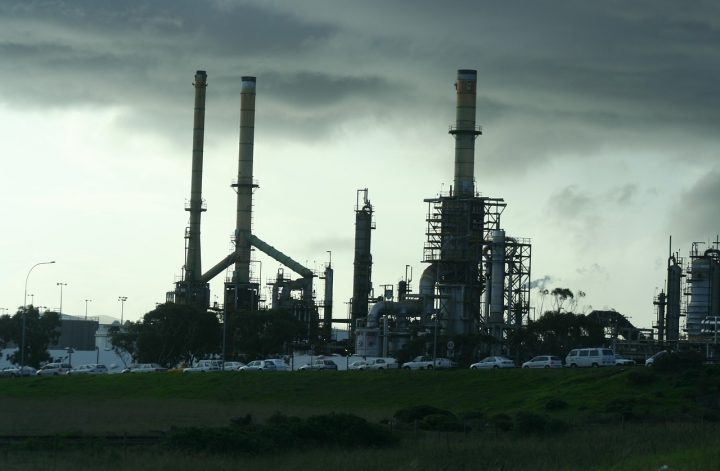INTRODUCTION
Pakistan has a history of natural disasters. The country is prone to earthquakes and floods very often. Climate change is affecting the environment of Pakistan and bringing extreme weather events.
NATURAL DISASTER IN PAKISTAN
It is a natural but catastrophic event that results in human and livelihood losses. There is a number of natural hazards that hit Pakistan seasonally or occasionally.
Check out: Climate Change Adaptation Methods and Mitigation Strategies
1. EARTHQUAKES
This term is defined as the sudden shaking of the Earth’s surface due to seismic waves. These waves are created by the instant release of energy from the Earth’s lithosphere.
CAUSES
- Underground tectonic plates movement
- Human Activities such as fracking projects
- Volcanic Eruptions
EFFECTS
- Landslides
- Deaths
- Tsunamis
- Ground failures
AREAS OF PAKISTAN PRONE TO EARTHQUAKE
The listed areas are prone to earthquakes due to fault lines. These areas are present over the north-western edge of the Indian Plate.
- Sindh
- Azad Kashmir
- Punjab
MAJOR EARTHQUAKES OF PAKISTAN
- 1983 Gilgit Baltistan
- 1992 Kohat Division
- 1997Balochistan
- 2005 Kashmir
You may also be interested in: Heatwaves in Pakistan And India – Causes, Effects, Solutions
2. HURRICANES
This term is also known as a tropical cyclone. It is a fast rotating storm with lower pressure at the center that formed over the tropical and subtropical waters. It is specified by a spiral array of thunderstorms, heavy winds, low level air circulations that are producing heavy rains.
CAUSES
- Warm Water
- Light winds
- Moist warm air
EFFECTS
- Tornadoes
- Heavy rains
- property damage and deaths
- Floods
AREAS OF PAKISTAN PRONE TO HURRICANES
The areas prone to hurricanes in Pakistan include the coasts of Pakistan.
- Balochistan- Gawadar
- Sindh – Karachi
MAJOR HURRICANES OF PAKISTAN
- 2004 Cyclone Onil
- 2007 Cyclone Yemyin
- 2009 Cyclone Phyan
- 2010 Cyclone Phet
3. SANDSTORMS
This term is also known as a dust storm. It is defined as a natural phenomenon in which the heavy winds blow and carry clouds of loose dirt and sand from dry surfaces such as deserts. Sandstorms occur frequently in arid and semi-arid regions.
CAUSES
- Strong Winds
EFFECTS
- Respiratory Problems
- Skin Irritations
- Accidents
AREAS OF PAKISTAN PRONE TO SANDSTORMS
The areas of Pakistan prone to sandstorms are arid and semi-arid regions.
- Sindh – Thar
- Punjab – Cholistan and Thal
- Balochistan – Kharan
MAJOR SANDSTORMS OF PAKISTAN
- 1993 Windstorm
- 2003 Pale Dust
- 2005 Duststorm
- 2019 Duststorm
4. FLOODS
This term is defined as a natural disaster in which the water overflows from water bodies such as streams, rivers, lakes, etc.
SEASONAL AND FLASH FLOOD
These are two types of floods.
Seasonal Floods: Seasonal flood occurs in rivers due to seasonal rainfall, or melting of snow/glaciers. It causes property loss.
Flash Floods: Flash flood is also a river flood but it is more catastrophic in nature and causes human and property losses. For more info: Flash Floods – Causes, Effects, Prevention and Management.
CAUSES
- Ocean Waves
- Heavy Rainfall
- Melting glaciers/snow
EFFECTS
- Livestock damage
- Deaths
- Property losses
- Damage to Crops
AREAS OF PAKISTAN PRONE TO FLOODS
The areas prone to floods in Pakistan are listed below. The reason is monsoon rainfall.
- Khyber Pakhtunkhwa
- Sindh
- Punjab
MAJOR FLOODS OF PAKISTAN
- 1992 Floods
- 1998 Floods
- 2010 Pakistan Floods
- 2011 Sindh Floods
Check out: Pakistan Flood Mitigation Measures and Disaster Management and How To Prevent Hazardous Monsoon Season Flooding in Pakistan.
5. LANDSLIDES
This term is defined as the widespread collapse of the heavy mass of Earth either from the mountain/cliff or ground movements. It includes debris flow, mudflows, rockfall, etc. For more info: Landslides and Rockfall – Causes, Effects, and Prevention.
CAUSES
- Slope instability
- Earthquake
- Rainfall
EFFECTS
- Damage to Natural Resources
- Deaths
- Infracsteucture Destruction
AREAS OF PAKISTAN PRONE TO LANDSLIDES
The areas of Pakistan prone to frequent landslides include northern Pakistan.
- Khyber Pakhtunkhwa
- Gilgit Baltistan
MAJOR LANDSLIDES OF PAKISTAN
- 2005 Earthquake Landslide
- 2010 Hunza Landslide
- 2016 Kohistan Landslide
- 2017 Gilgit Baltistan Landslide
6. AVALANCHES
This term is defined as the sudden downwards flow of snow from a mountain or hill.
CAUSES
- Heavy Snowfall
- Human activities such as Winter Sports/ Vibrations
- Heavy winds
- Snowstorms
EFFECTS
- Damage to houses
- Lost Travel Route
- Ski Resort Destruction
AREAS OF PAKISTAN PRONE TO AVALANCHES
The areas of Pakistan prone to avalanches include northern Pakistan.
- Kashmir
- Khyber Pakhtunkhwa
- Gilgit-Baltistan
MAJOR AVALANCHES OF PAKISTAN
- 2010 Kohistan Avalanche
- 2012 Gayari Sector Avalanche
- 2019n Avalanche
- 2020 Kashmir Avalanche
You might also like to read: Glacial Lake Outburst Floods in Pakistan- Causes and Effects and Third Pole Is Melting – Himalaya-HinduKush-Karakoram Glacier.
7. DROUGHT
This term is defined as prolonged dry weather or an extreme shortage of water supply whether surface, ground or atmospheric water.
CAUSES
- Dry weather condition
- Water Scarcity
EFFECTS
- Wildfires
- Deaths
- Economic losses
AREAS OF PAKISTAN PRONE TO DROUGHTS
The areas of Pakistan prone to droughts are listed below. The is water scarcity issues.
- Sindh
- Balochistan
- Khyber Pakhtunkhwa
MAJOR DROUGHTS OF PAKISTAN
- 1951 Khyber Pakhtunkhwa Drought
- 1947 Sindh Drought
- 1999 Sindh Drought
- 2000 Balochistan Drought
Also read: What is a Healthy Environment? Why is it important?
MAJOR PAST NATURAL DISASTER EVENTS IN PAKISTAN
Below, there is a list of few major events of natural disasters that occurred in Pakistan.
The 2000 Baluchistan Drought: Due to the drought in Baluchistan in 2000, more than 1.2 million people were afflicted.
The 2005 Azad Kashmir Earthquake: Thee earthquake of 7.6 magnitudes hit various parts of Pakistan in 2005. There were aftershocks felt in different regions. More than 80000 people died and economic losses were huge.
The 2010 Landslide in Hunza Lake: In northern Pakistan, a massive landslide in the region of Hunza valley created Attabad Lake. More than 20 people died and 26 homes were destroyed.
The 2010 Floods: It was a result of heavy monsoon rains in the regions of Baluchistan, Punjab, Sindh, and Khyber Pakhtunkhwa. It caused property damage worth $43 billion and more than 1,781 people died.
Also read: Current Environmental Issues In Pakistan – List With Detail
DISASTER MANAGEMENT TECHNIQUES FOR NATURAL DISASTER
Disaster management techniques are mentioned below.
- There should be announcements or weather predictions about the upcoming natural disaster.
- A disaster management plan should be prepared beforehand with all necessary instructions.
- Prior precautionary measures should be adopted to avoid damages.
- The public should be made aware of natural disasters, precautionary measures, and management strategies.
- There should always be a recovery plan for any natural disaster.
Check out: Impacts Of Changing Monsoon Season Rains Pattern In Pakistan
CONCLUSION
Natural disasters occur spontaneously. Sometimes human negligence triggers natural disasters such as avalanches, rockfalls. Human-induced climate change is already showing extreme consequences. A natural disaster cannot be avoided. The only solution is precautionary measures that could be adopted to lessen negative effects.
Also check out: Increasing Natural Disasters due to Climate Change
I hope you all liked this post! Please comment below if you have any suggestions, comments, or feedback! We at #envpk love hearing from our readers! Thanks!





3 Comments
Very well… Mam
Thank you!
Hello respected Sir/Madam! I am an MS scholar of Disaster Management at the University of Peshawar. I am doing research on the multi-hazards mapping of Khyber Pakhtunkhwa. I need detailed data on some hazards. Can you help me provide the data on earthquakes, floods, landslides, and drought? Your little help will be more than enough for me. thank you
zakriasafi80@gmail.com